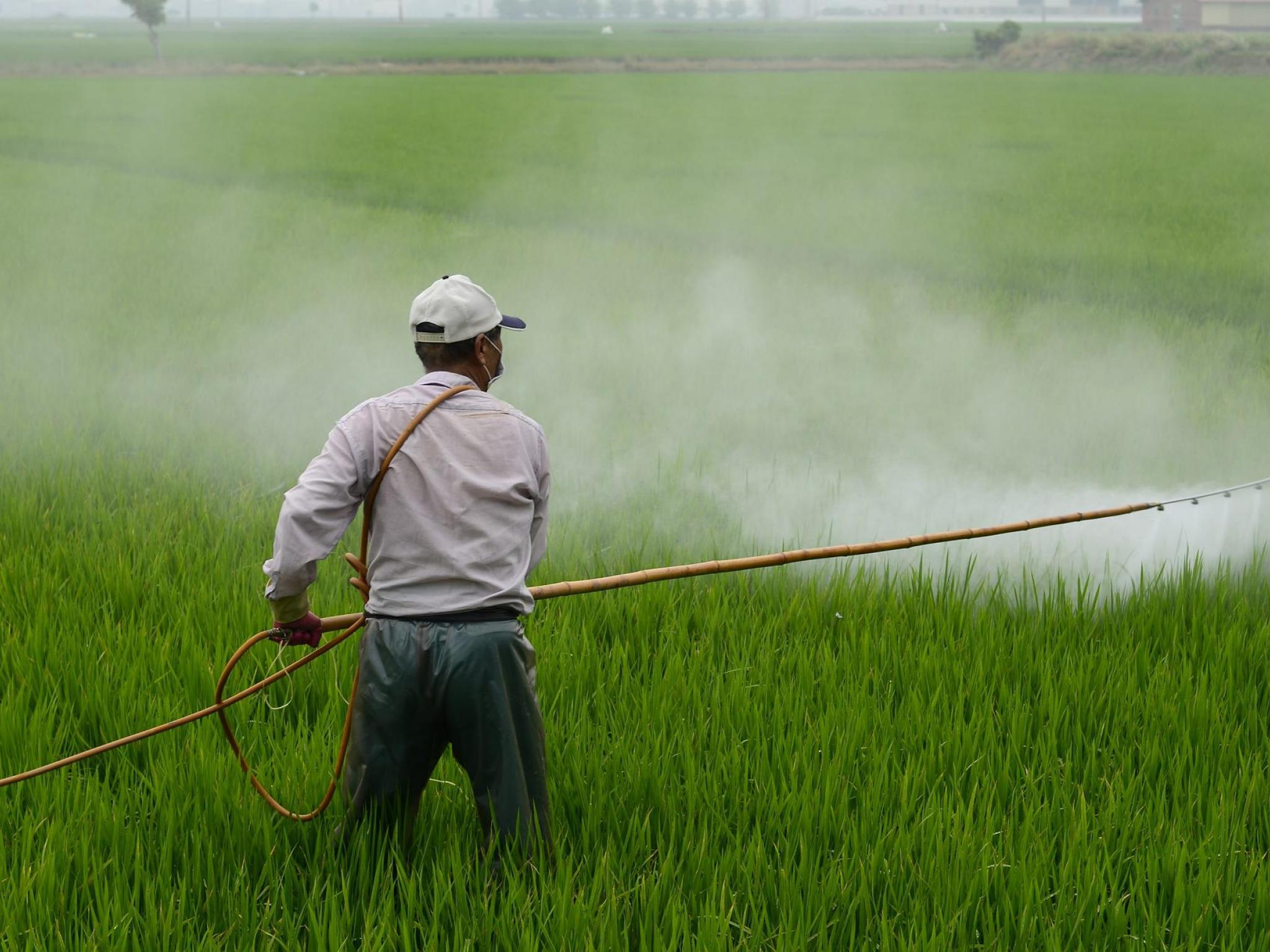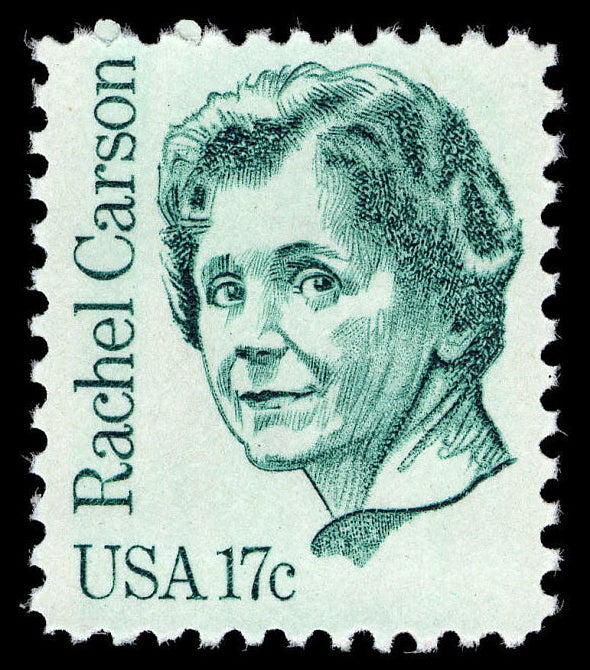
(This marks the first installment of Benzinga’s new weekly series Science Wednesday, which provides an overview of news and milestones within the sciences.)
'Silent Spring' Turns 60: This month marks the 60th anniversary of the first publication (via a New Yorker serialization) of Rachel Carson’s groundbreaking “Silent Spring,” which called attention to the deleterious effects of the reckless use insecticides on the ecosystem and human health, which set into the motion the rise of modern environmental science.
Carson was a marine biologist with an uncommon gift for language. Her 1951 book “The Sea Around Us” framed the complexities of oceanography in a lyrical yet user-friendly manner that caught the imagination of readers and earned her a National Book Award.

With “Silent Spring,” she switched her focus to terrestrial chaos created by synthetic pesticides. Scott Wallace, an associate professor of journalism at the University of Connecticut, noted that Carson’s presentation of disturbing data on the degradations created by these pesticides literally changed the world.
“‘Silent Spring’ and her work gave rise to the environmental movement and environmental journalism,” Wallace said. “It gave birth to the Environmental Protection Agency, led to the banning of many carcinogenic and harmful substances that were used by industry in agriculture and for other purposes.”
Wallace recalled that the chemical industry was outraged at Carson’s work and did everything in its power to challenge and condemn her.
“It was viewed as very controversial from the start,” he continued. “Rachel Carson fearlessly took on an entire industry and the many people in politics who depended on that industry. You could say that today there are certainly echoes of that in the very strident denial on the part of many politicians and of industry on planetary warming and its connection to the burning of fossil fuels.”
One politician who was not intimidated by the chemical industry was President John F. Kennedy, who read the New Yorker serialization and directed his Science Advisory Committee to study the claims made in “Silent Spring.” In May 1963, the committee issued a report affirming Carson’s research.
“She brought people to a higher awareness of the damage that we were doing to nature,” Wallace said.
“If you think back at that time in the early 60s, we still had a very self-congratulatory view of ourselves and our role on the planet — we assumed that we were the stewards of the planet and we could pretty much deal with it as we liked by engineering solutions through the use of chemicals and technology. I think that she appealed to human beings to empathize more with nature and to take a little bit more of a meditative look at the wonders around us and our role in the world — not so much a dominator of it, but as more of a participant in the world in league with our fellow creatures.”
Carson’s work continues to generate criticism. Jeff Peters, editor and publisher of the pop culture-focused website News and Times and a scholar at Catholic University in Washington, D.C., questioned the balance between Carson’s appeal to empathy and her scientific research skills.
“The problem with Rachel Carson's work is not necessarily in the objective or results of the work, but in the willingness to take conjecture and turn it into an absolute,” Peters explained. “Much of the work is opinion with very loose citations, not a scientific study. It is pop-science at best, without rigor common to traditional science.
“This led to many ideas being severely overstated,” he continued. “She begins her work with a town devastated by DDT, showing the horrors, but then drops a note to say ‘This town does not actually exist.’ This is the structure of the work — doomsday fantasy scenarios without justification. That is neither how journalism nor science works.”
Peters pointed out that Carson’s presentation knitted isolated and unrelated mishandlings of pesticides together, creating what he described as a “work of conflation and exaggeration — spreading out small problems has little impact, but combining them all into one makes them seem more of a danger.” He also accused Carson of rewriting science to fit her thesis.
“Then there are philosophical statements that are absurd, such as ‘It took hundreds of millions of years to produce the life that now inhabits the earth – eons of time in which that developing and evolving and diversifying life reached a state of adjustment and balance with its surroundings,’” he said, quoting Carson’s work.
“Life has existed throughout this time, but she suggests that there is one mythical ideal that exists on a precipice, as if it could all end tomorrow. To act like we suddenly had a balance that never existed is just laughable and shows a religious faith akin to those who suggest that the world was created merely 7,000 years ago.”
Still, it is difficult to ignore the legacy of “Silent Spring.” Carson died from cancer two years after its publication, but her work is still being shared with new generations.
“I present her as a fearless journalist who through hard work, determination and a conviction and passion for what she was doing, persevered to really make a difference in the world,” said Wallace. “And I teach my students that they are in an important and privileged position to also make a difference.”
See Also: EXCLUSIVE: Arianne Phosphate's Brian Ostroff On The Crisis Facing The Global Food Supply
Science And Medicine Brief

Bringing Up Baby: Miners working in the gold fields of the Canadian Yukon found something they weren’t expecting: a perfectly preserved baby mammoth that lived more than 30,000 years ago.
According to a Daily Mail report, the female mammoth calf was frozen in permafrost, which resulted in being mummified with her skin intact at strands of hair still on her body. Scientists have named the calf “Nun cho ga,” which is “big baby animal” in the Hän language of the Trʼondëk Hwëchʼin Traditional Territory where it was discovered.
“As an ice age paleontologist, it has been one of my lifelong dreams to come face to face with a real woolly mammoth,” said paleontologist Dr. Grant Zazula. “As an Ice Age paleontologist, it has been one of my lifelong dreams to come face to face with a real woolly mammoth. That dream came true today — Nun cho ga is beautiful and one of the most incredible mummified ice age animals ever discovered in the world. I am excited to get to know her more.”
Addressing The Imaging Gap: Bayer AG (OTC:BAYRY) has introduced Calantic Digital Solutions, a cloud-hosted platform delivering access to digital applications, including AI-enabled programs, for medical imaging.
According to the company, the platform contains tools to help triage critical patient findings for expedited review, improved lesion detection and automated tasks, and its introduction comes at a time when the demand for medical imaging is on the rise while the number of radiologists is in decline.
“With Calantic Digital Solutions, we are entering the fastest growing segment in the radiology market and taking the next step from a product provider to a solution provider, following our mission to provide an ecosystem of third-party and Bayer products to deliver innovative disease-oriented solutions for radiologists and their teams,” said Gerd Krüger, head of radiology at Bayer Pharmaceuticals.
A New Nursing Wave: Georgia College & State University (GCSU) has added a third cohort of nursing students to its Bachelor of Science in Nursing degree program in an effort to fill the growing void of nursing professionals who are leaving the profession.
“It is estimated that an additional 175,900 registered nurses (RNs) will exit the workforce each year for personal reasons or through retirement,” said Josie Doss, interim director and associate professor in GCSU's School of Nursing. “Though Georgia has around 100,000 RNs, we still have one of the lowest densities in the nation. We’re preparing nurses to fill that need.”
The cohort of 40 students is on an accelerated path — a first for the school — and students are expected to graduate in only 15 months, a feat that will be achieved by attending classes for four continuous semesters, including summers. But the speed of their education will not dilute the efficiency of their lessons.
“We’re giving students the tools they need in their undergraduate years, so they’re prepared for the workforce,” said Morgan Fordham, lecturer of nursing. “I’m teaching them high-pressure situation skills and stress management techniques to help them after they graduate,” she said. "It’s not enough to have warm bodies in healthcare. A good quality nurse is going to save a life.”
Photos: Cover photo by Zefe Wu/Pixabay; Rachel Carson stamp photo courtesy of the National Postal Museum; baby mammoth photo courtesy of the Yukon government.
See Also: Stock Wars: Axsome Therapeutics Vs. Global Blood Therapeutics







